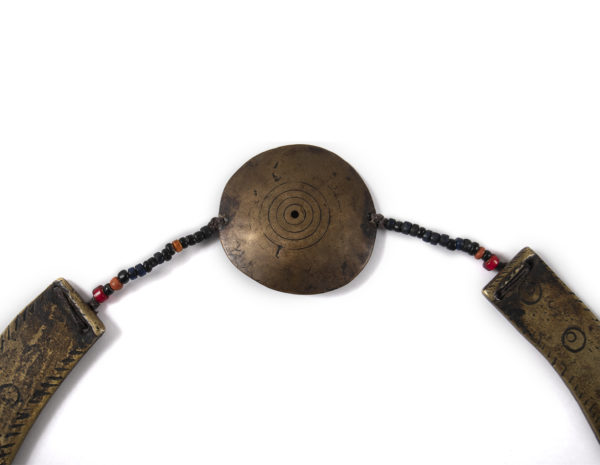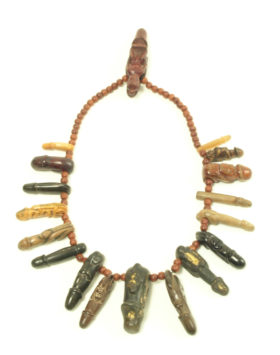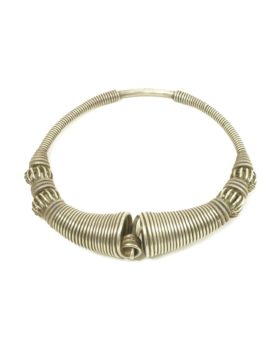Naga Brass Necklace
Nagaland, the smallest of Indian states, is located in North East India, bordering Burma. Its inhabitants are aboriginal tribes whose distinct culture has persisted for thousands of years. Their culture is free of Hindu influence, instead, it is animistic, meaning objects, plants or animals possess energy or soul. Once significance is ascribed to worn materials they become important power objects.
Naga jewelry is worn mainly by men warriors during ceremonial festivals and it is quite uniform. The prerogative to wear particular ornament is strictly controlled and rights to wear certain ornaments are earned, allowing for social mobility. Rights are permitted based on bravery, wealth and prestige. Materials used are varied- vegetable substances like bamboo or wood, animal materials like skin, hair, claws, horns and tusks, imported materials like ivory, seashells, coral and metals and hard stone beads like rock crystals, carnelian, amber, and glass.
Imported brass is a common component of Naga jewelry. Three methods were used to fabricate the jewels: sheet metal fabricating, forging and lost wax casting. Pectoral ornaments were usually made in lost wax casting. This necklace, made of beautifully patinated brass components, has a center pectoral piece that imitates cut conch shell and may have been used as a substitute for brass heads to indicate head taking status which has been banned since the middle of the 19th century. The pectoral is tied to two more flat brass arches with a disk at the top. All interspersed with glass beads
Circa: Late 19th early 20th century
Origin: India
Material: Brass
Condition: Excellent condition
Dimensions: 20" Drop X 10" W
Inventory number: JL3631
$2,700
SOLD













